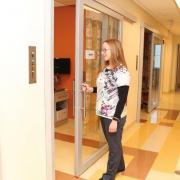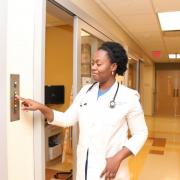
Urgent Care or Emergency Room? Which One Should You Go To?
Urgent Care or Emergency Room? Which One Should You Go To?
Medical emergencies happen, but many illnesses do not require a visit to the emergency room. However, “finding an urgent care near me” can be frustrating when you or your child is sick. In addition, the cost of an emergency room visit can be up to 400% more than the cost of being seen in an urgent healthcare center. Rather than choosing between urgent healthcare facilities and emergency centers at random, you need to know what each facility can treat and when visiting an emergency room is appropriate.
When Is Visiting an Emergency Room Appropriate?
Emergency rooms are designed to provide a wide variety of care levels. Although emergency facilities can provide care for those with minor ailments, especially among people without insurance or a primary care physician, they also provide care for life-threatening emergencies.
For example, emergencies requiring care in an emergency room include the following:
- Stroke or changes in level of consciousness. Those with a history of stroke experiencing unforeseen changes in muscle weakness should also visit an emergency department.

- Electrocution or being struck by lightning. Electrocution may result in internal and external injuries, such as cardiac arrest or severe burns.
- Severe burns. A severe burn consists of a burn beyond what is typically seen in a minor sunburn. For example, burns deeper than the epidermis, the outermost layer of skin, or those resulting in blackening of the skin are medical emergencies.
- Any ailment in which death or serious permanent injury may occur if immediate care is not required. This is the predominant indicator of a medical emergency. In other words, traumatic injuries or health problems that are life-threatening fall under this category. It includes suicidal thoughts or actions as well.
- A major injury, such as a gunshot wound or knife wound. These wounds may appear superficial, but they often involve damage to internal tissues and organs, requiring surgery or other advanced healthcare measures.
Unlike a heart attack or stroke, identifying some medical emergencies is not immediately possible. However, the presence of certain symptoms can help you determine if care in an emergency room is needed, reports MedlinePlus. These symptoms include the following:
- Extreme high or low blood pressure. An ideal blood pressure is 120/80 mmHg. The signs and symptoms of dramatic changes in blood pressure may include sudden dizziness, changes in mental status, or even pain in the extremities.
- Changes in level of consciousness. The simplest way to determine a person’s level of consciousness is by asking questions that a person would normally be able to answer. For example: What is the date? Who is the president? What’s your name? How old are you? If a person is unable to answer these questions, it reflects a possible change in level of consciousness, and a visit to the emergency room is warranted.
- Difficulty breathing or shortness of breath. There are many illnesses that may result in shortness of breath, including allergic reactions, pain, asthma, or other history of breathing problems.
- Known history of anaphylactic shock, a severe type of allergic reaction, to bug bites, foods or animals. For example, people with severe allergies to bee stings or peanut butter may need emergency care if exposure to one of these substances occurs.
- Excessive bleeding. This includes bleeding that occurs without explanation or cause. For example, excessive bleeding from the nose or mouth may require a visit to an emergency room. In addition, bleeding that is spurting or bright red indicates blood loss from an artery, constituting a medical emergency.
- Changes in mental status aside from loss of consciousness, such as confusion, unusual behaviors or extreme lethargy. Although these changes may occur following an infection, they should be thoroughly evaluated to exclude possible brain injuries.
- Chest pain or tightness. This may indicate problems with circulation in the lungs or heart, not just the stereotypical heart attack.
- Weakness on one side of the body or face. Weakness includes any unexplained tingling, numbness or paralysis that appears dominant on one side of the body. Additionally, facial droop falls under this indicator.
- Coughing up blood. These symptoms may indicate a problem with the lungs or esophagus.
- Any incident involving a possible head or brain injury, such as a car accident. This may also include falls from heights.
- Severe, persistent vomiting. Excess vomiting may be a symptom of a head injury. Moreover, continued vomiting may result in bleeding of the esophagus or stomach, increasing the need for emergency care.
- Unusual changes in vision. Changes in vision may result from an injury to the eyes or head. Additionally, vision changes may occur following a dramatic increase or decrease in blood sugar.
- Ingestion of a poisonous substance. This incident also includes exposure to possible poisons, such as rat poison or pesticides, in any of the mucus membranes, including the eyes, nose, throat or wounds.
- Seizure lasting more than five minutes. Although a seizure lasting more than five minutes warrants an emergency room visit, repeated seizures within a short timeframe should also be evaluated. However, those with existing seizure disorders may speak with their primary care physician if immediate care is necessary.
When Is Visiting an Urgent Care Center Appropriate?
Comparable to emergency rooms, an urgent healthcare center is typically considered a walk-in clinic near me, and can provide several specialty services as well. These centers provide care for issues that are not life-threatening. However, these ailments require being seen within the next 24 hours for optimal health. In many cases, people visit one of these centers when they cannot get in to see their primary care physician or if they do not have a primary care physician.
Centers providing urgent care can treat common illnesses, which include the following:
- Allergic Reactions (non-life threatening)
- Animal Bites
- Back pain
- Broken Bones
- Coughs, colds, sore throats, and ear infections
- Diarrhea, with possible dehydration
- Earaches
- Headaches or migraines
- Fever or flu-like symptoms
- Minor burns or injuries
- Minor fevers of less than 101°.
- Moderate asthma
- Rash or other skin irritations
- Sprains and strains
- Urinary Tract Infections
Additionally, people may choose to avoid the emergency room if they have a minor injury, such as a sprain or strain, mild back pain, minor cuts, including those that require stitches, minor broken bones and minor eye injuries.
What Are the Advantages of Visiting an Urgent Care Clinic?
More than 40% of people require immediate or emergency room care annually in the U.S., reports the Centers for Disease Control and Prevention (CDC). In fact, approximately 130.4 million people visit emergency departments, and 37.2 million are the  result of a minor or major injury. However, only 9.3% of those seen in an emergency room result in hospital admission or admission to another inpatient care facility.
result of a minor or major injury. However, only 9.3% of those seen in an emergency room result in hospital admission or admission to another inpatient care facility.
Excluding cases involving advanced diagnostic testing, these statistics indicate that 90% of patients could have received care in an alternate facility. In fact, up to 27% could have received care in an urgent healthcare clinic instead. But, why are more people choosing urgent care over emergency room care?
It goes back to time and money. Emergency rooms may have extensive wait times, which make an illness feel even worse.
On average, the wait time for seeing a provider in an emergency room was 58 minutes in 2009, reflecting an 11-minute increase over the previous six years. However, the increased use of emergency rooms since that time may allude to longer wait times. Studies of emergency room wait times have not been conducted to determine national statistics in recent years. More importantly, this does not include treatment times, which may be several hours. This contributes to a significant increase in perceived wait time.
Unlike emergency rooms, gaining immediate care near me in an urgent healthcare facility is statistically faster. According to Becker’s Hospital Review, 69% of patients saw a provider in less than 20 minutes at an urgent healthcare center.
Know the Difference, and See a Provider Sooner Rather Than Later.
When you are sick, going to an emergency room might seem like your only solution. However, you can save money and time by going to an urgent healthcare clinic instead. Take the time to learn when a visit to the emergency department is necessary, and go to an urgent care clinic if your symptoms, health, and health history are appropriate.
If you are still unsure, ask a health care professional at Crystal Run Healthcare online or by calling 1(845) 703-6999 now.
Source
- https://www.crystalrunhealthcare.com/specialties/primary-care-adult
- https://medlineplus.gov/ency/patientinstructions/000593.htm
- https://www.crystalrunhealthcare.com/specialties
- https://www.cdc.gov/nchs/fastats/emergency-department.htm
- https://www.cdc.gov/nchs/products/databriefs/db102.htm
- https://www.crystalrunhealthcare.com/contact-us

 Optum Radiology at Crystal Run Healthcare
Optum Radiology at Crystal Run Healthcare Request medical records online
Request medical records online